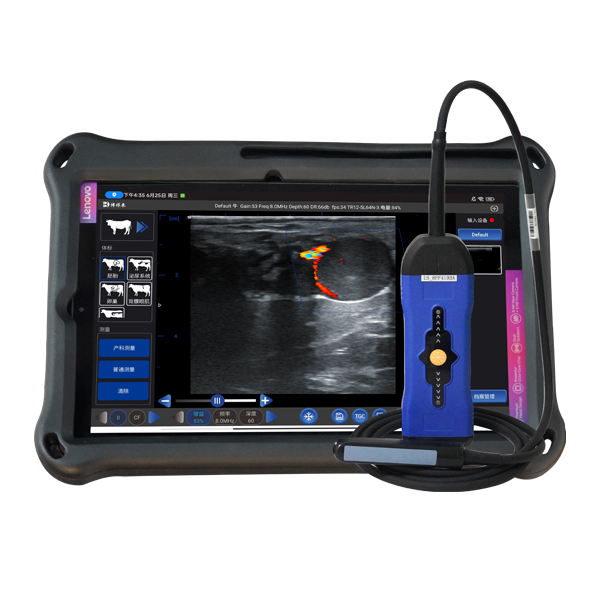If you’re a horse owner or work on a farm with horses, you probably know how tricky it can be to spot early signs of respiratory problems. Horses are tough creatures, often hiding discomfort until things get serious. One condition that can quietly affect their health is lung fluid buildup, which, if left unchecked, can lead to pneumonia or chronic respiratory disease. Luckily, with advances in portable ultrasound technology, it’s now easier than ever to detect and monitor lung fluid in horses right on the farm — no need to haul them off to a clinic.
Why Lung Fluid Matters in Horses
Lung fluid buildup, medically known as pulmonary edema or pleural effusion depending on where the fluid collects, can cause breathing difficulties, reduce performance, and generally impact a horse’s well-being. It’s common in cases of infections, heart problems, or even severe allergies. The tricky part is that early symptoms—like mild coughing, subtle changes in breathing, or occasional nasal discharge—can easily be mistaken for simple cold or exercise fatigue.
Traditional diagnosis often involves clinical signs assessment, blood tests, and sometimes chest X-rays or endoscopy. But these methods can be expensive, require specialized facilities, or stress the animal during transport.
Enter Portable Ultrasound: A Game Changer for On-Farm Diagnostics
Portable ultrasound devices bring the power of imaging directly to the horse’s stall or paddock. These devices are lightweight, battery-powered, and simple to operate, making them perfect for regular on-farm check-ups. By using ultrasound waves, vets or trained farm staff can visualize the lung surfaces and pleural space, identifying abnormal fluid accumulation with great accuracy.
The ability to perform real-time, non-invasive imaging without sedation or moving the horse significantly improves early detection. It also allows for frequent monitoring, tracking how lung fluid levels change during treatment or recovery.
How Portable Ultrasound Works for Lung Fluid Detection
Ultrasound doesn’t penetrate air well, so the normal lung, full of air, appears black (anechoic) on the screen. When fluid is present, it shows up as white or grayish areas (echogenic), indicating something is disrupting the normal air-tissue interface. This contrast helps identify:
Pleural Effusion: Fluid between the lung and chest wall. Ultrasound shows fluid collecting in this space as an anechoic area above the lung surface.
Pulmonary Edema or Consolidation: Fluid inside lung tissue. Ultrasound detects thickened lung surfaces or “hepatized” areas where the lung tissue looks solid rather than spongy.
The process typically involves placing a probe on the horse’s thorax after shaving or wetting the hair to improve contact. Scanning through different intercostal spaces (between the ribs) allows assessment of various lung lobes.
Benefits of Using Portable Ultrasound on the Farm
Early Detection: Spotting fluid buildup before clinical signs worsen means quicker intervention, potentially saving lives.
Non-invasive and Stress-Free: No needles, no sedation, no transport to clinics. Horses usually tolerate the procedure calmly.
Cost-Effective: Avoiding expensive diagnostic imaging and reducing veterinary visits cuts costs.
Monitoring Treatment Progress: Repeated scans show whether fluid is resolving or if further treatment is needed.
Decision-Making Support: Helps trainers decide when a horse is fit to resume training or competition.
Real-World Farm Experience: A Day with Portable Ultrasound
On one farm I visited in Kentucky, a trainer was worried about a couple of their older racehorses who had been coughing occasionally. Instead of waiting for full-blown symptoms, the vet brought a portable ultrasound unit out. They scanned several lung areas on each horse right in the barn.
The ultrasound quickly revealed small pockets of pleural fluid in one horse and lung consolidation in another. Thanks to this early diagnosis, the horses received targeted antibiotics and anti-inflammatories, avoiding prolonged illness. Over the next few weeks, repeat ultrasounds showed gradual clearing of fluid, and both horses returned to full training without further issues.
Challenges and Considerations
While portable ultrasound is incredibly useful, it’s not without limitations:
Operator Skill: Accurate interpretation requires training and experience. Misreading artifacts or normal variations can lead to false positives or negatives.
Equipment Quality: High-quality probes and machines provide better images but may be more expensive.
Limited Depth: Ultrasound can’t image deep lung tissue well due to air interference.
Complementary Tool: It should be used alongside clinical exams and other diagnostics, not replace them.
How to Get Started with Lung Ultrasound on Your Farm
If you’re interested in adding lung ultrasound to your herd health routine, here are some steps:
Training: Invest in hands-on training courses for vets and farm technicians. Some veterinary schools and ultrasound manufacturers offer specialized workshops.
Choosing Equipment: Consider portability, battery life, image quality, and probe types. Devices with dedicated lung presets help optimize image clarity.
Routine Screening: Implement periodic lung scans, especially during cold seasons or after respiratory outbreaks.
Record Keeping: Maintain ultrasound records to track individual horses’ respiratory health over time.
Collaboration: Work closely with your veterinarian to interpret findings and plan treatments.
Looking Ahead: The Future of On-Farm Respiratory Monitoring
Technology keeps improving. The integration of AI-assisted image analysis is on the horizon, which may help less experienced users interpret scans accurately. Wearable sensors combined with ultrasound could provide continuous respiratory monitoring. These advances will make early detection and management of lung fluid buildup even easier and more effective.
Final Thoughts
Ultrasound isn’t just for pregnancy checks or tendon injuries anymore. For horses, especially those on farms or in athletic programs, portable ultrasound offers a powerful window into their respiratory health. Catching lung fluid buildup early can mean the difference between a quick recovery and chronic problems.
If you care about keeping your horses breathing easy and performing at their best, embracing portable ultrasound on your farm is a smart move. It’s a tool that blends technology with practical farm life, helping ensure your horses stay healthy, happy, and ready for whatever the day brings.








